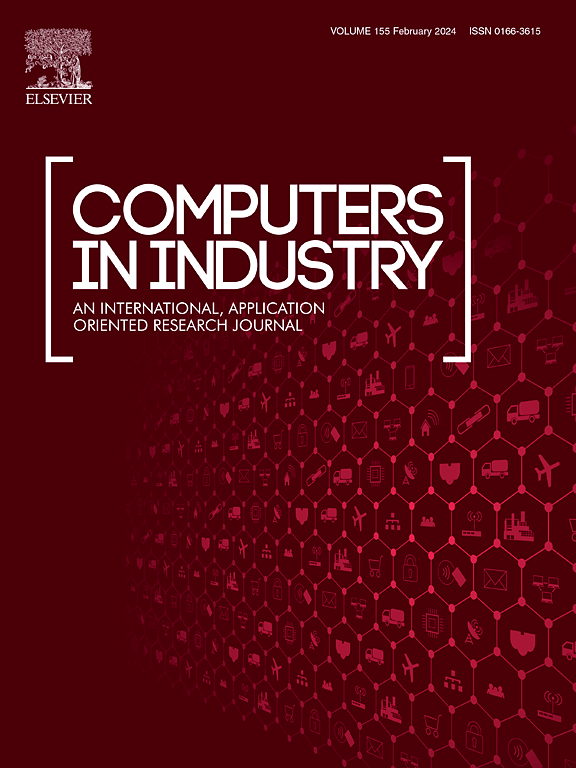Rapid quality control for recycled coarse aggregates (RCA) streams: Multi-sensor integration for advanced contaminant detection
IF 8.2
1区 计算机科学
Q1 COMPUTER SCIENCE, INTERDISCIPLINARY APPLICATIONS
引用次数: 0
Abstract
Recycling coarse aggregates from construction and demolition waste is essential for sustainable construction practices. However, the quality of recycled coarse aggregates (RCA) often fluctuates significantly, in contrast to the more stable quality of natural aggregates. Contaminants in RCA notably compromise its quality and usability. Therefore, automating the quality control of RCA is necessary for the recycling industry. This study introduces an industry-focused, innovative, and rapid quality control system that combines Laser-Induced Breakdown Spectroscopy (LIBS) with 3D scanning technologies to enhance the detection of contaminants in RCA streams. The system involves a synchronized application of LIBS for spectral analysis and 3D scanning for the physical characterization of different materials. Results reveal that the dependability of single-shot LIBS analysis has been enhanced, thus elevating the precision of contaminant detection. This improvement is achieved by accounting for the laser shot's angle of incidence and focal length adjustments. The introduced technology holds potential for application in the real-time examination of substantial volumes of RCA, facilitating a rapid and reliable quality control method. This rapid assessment technique delivers online data about the concentration of contaminants in RCA, including recycled fine aggregates, cement paste, bricks, foam, glass, gypsum, mineral fibers, plastics, and wood. This data is both essential and sufficient for choosing a cost-effective mortar recipe and guaranteeing the performance of the final concrete product in terms of strength and durability in construction projects. The system can monitor the quality of RCA flows at throughputs of 50 tons per hour per conveyor, characterizing approximately 4000 particles in every ton of RCA, in this way signaling the most critical contaminants at levels of less than 50 parts per million. With these characteristics, the system could also become relevant for other applications, such as characterizing mining waste or solid biofuels for power plants.
再生粗骨料 (RCA) 流的快速质量控制:先进污染物检测的多传感器集成
从建筑和拆除废料中回收粗骨料对可持续建筑实践至关重要。然而,与天然骨料较为稳定的质量相比,回收粗骨料(RCA)的质量往往波动很大。再生粗骨料中的污染物会明显影响其质量和可用性。因此,实现 RCA 质量控制自动化对于回收行业来说非常必要。本研究介绍了一种以行业为重点的创新型快速质量控制系统,该系统结合了激光诱导击穿光谱(LIBS)和三维扫描技术,以加强对 RCA 流中污染物的检测。该系统包括同步应用用于光谱分析的激光诱导击穿光谱仪和用于不同材料物理表征的三维扫描。结果表明,单次 LIBS 分析的可靠性得到了增强,从而提高了污染物检测的精度。这一改进是通过考虑激光的入射角和焦距调整实现的。引入的技术有望应用于大量 RCA 的实时检测,从而促进快速可靠的质量控制方法。这种快速评估技术可提供有关 RCA(包括再生细骨料、水泥浆、砖块、泡沫、玻璃、石膏、矿物纤维、塑料和木材)中污染物浓度的在线数据。这些数据对于选择具有成本效益的砂浆配方以及保证建筑项目中最终混凝土产品的强度和耐久性能都是至关重要的。该系统可以在每条传送带每小时 50 吨的吞吐量下监测 RCA 流的质量,对每吨 RCA 中约 4000 个颗粒进行表征,从而将最关键的污染物含量控制在百万分之 50 以下。凭借这些特性,该系统还可用于其他应用,如鉴定采矿废料或发电厂的固体生物燃料。
本文章由计算机程序翻译,如有差异,请以英文原文为准。
求助全文
约1分钟内获得全文
求助全文
来源期刊

Computers in Industry
工程技术-计算机:跨学科应用
CiteScore
18.90
自引率
8.00%
发文量
152
审稿时长
22 days
期刊介绍:
The objective of Computers in Industry is to present original, high-quality, application-oriented research papers that:
• Illuminate emerging trends and possibilities in the utilization of Information and Communication Technology in industry;
• Establish connections or integrations across various technology domains within the expansive realm of computer applications for industry;
• Foster connections or integrations across diverse application areas of ICT in industry.
 求助内容:
求助内容: 应助结果提醒方式:
应助结果提醒方式:


